10.10 Photovoltaic (PV) Solar Energy + Storage
Jeff Simpson and Carolina Londono Michel
Learning Objectives – By the end of this chapter, you should be able to do the following.
- Explain how a photovoltaic panel or plant produces electricity.
- Identify the parts of the US with the greatest solar potential
- List advantages and disadvantages of photovoltaic energy.
- Explain the importance of the duck curve and how solar + storage can mitigate issues.
- Describe several possible long-duration energy storage options.
- Explain how energy storage works to support the electric grid.
- Distinguish between short-term and long-term energy storage.
Note: This section combines solar + storage. You will see why this is done as you read.
_________________________________
Solar energy is the major energy source driving life on earth and many human activities. Though only one billionth of the energy that leaves the sun reaches the earth’s surface, this is more than enough to meet the world’s entire energy needs. Solar energy represents an essentially unlimited supply of energy as the sun will long outlast human civilization on earth.
Unlike energy from fossil fuels, which almost always come from a central power plant, solar power can be harnessed locally. A solar water heater on the roof can provide all the water many houses need or heat a swimming pool. A set of photovoltaic solar panels on a home’s rooftop can provide electricity to the house, and with batteries, excess electricity produced by the panels can be stored and used when the sun is not out.
Society’s use of solar power on a larger scale is just starting to increase. Scientists and engineers have very active, ongoing research into new ways to harness energy from the Sun more efficiently. Because of the tremendous amount of incoming sunlight, solar power is being developed in the United States in southeastern California, Nevada, and Arizona.
Solar photovoltaic (PV) devices, or solar cells, change sunlight directly into electricity. PV uses semiconducting materials such as silicon to produce electricity from sunlight: when light hits the cells, the material produces free electrons that migrate across the cell, creating an electric current. Small PV cells can power calculators, watches, and other small electronic devices. Arrangements of many solar cells in PV panels and arrangements of multiple PV panels in PV arrays can produce electricity for an entire house. Some PV power plants have large arrays that cover many acres to produce electricity for thousands of homes. Hundreds of thousands of houses and buildings around the world have PV systems on their roofs. Many multi-megawatt PV power plants have also been built. Covering 4% of the world’s desert areas with photovoltaics could supply the equivalent of all of the world’s electricity. The Gobi Desert alone could supply almost all of the world’s total electricity demand.
Solar photovoltaic (PV) devices (or solar cells) change sunlight directly into electricity. Small PV cells can power calculators, watches, and other small electronic devices. Arrangements of many solar cells in PV panels and arrangements of multiple PV panels in PV arrays can produce electricity for an entire house. Some PV power plants have large arrays that cover many acres to produce electricity for thousands of homes. LINK
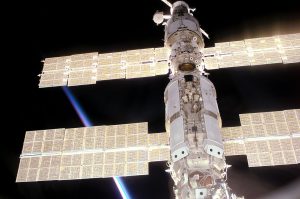
PV, developed in the US, was so expensive initially that it was used only where no other power sources would be feasible such as satellites or remote locations.
The four large panels shown in the image to the right are made of many smaller cells as shown below.
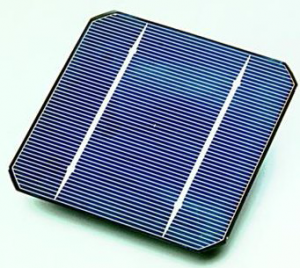
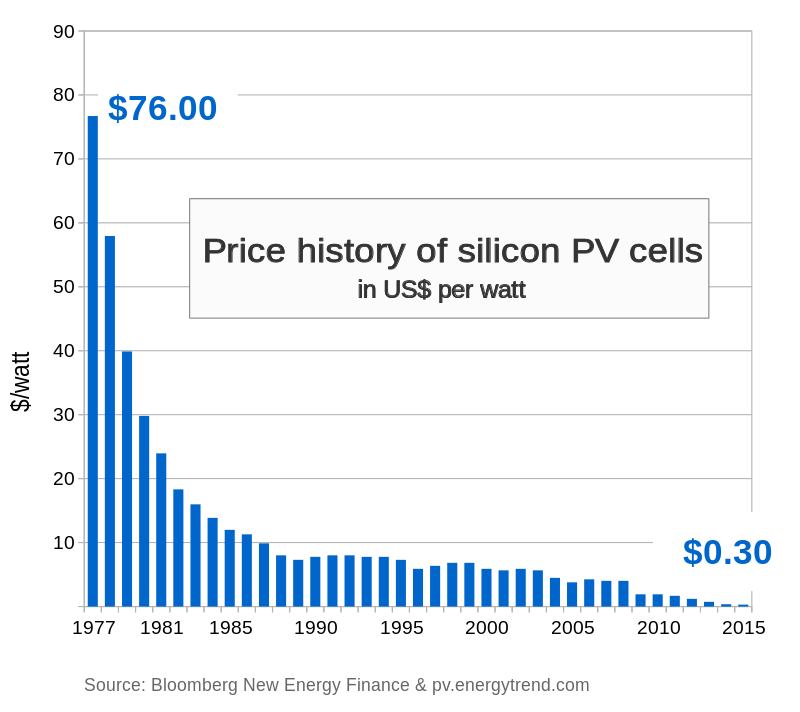
Growth of solar around the world has been so rapid that a logarithmic scale must be used in the graph below.
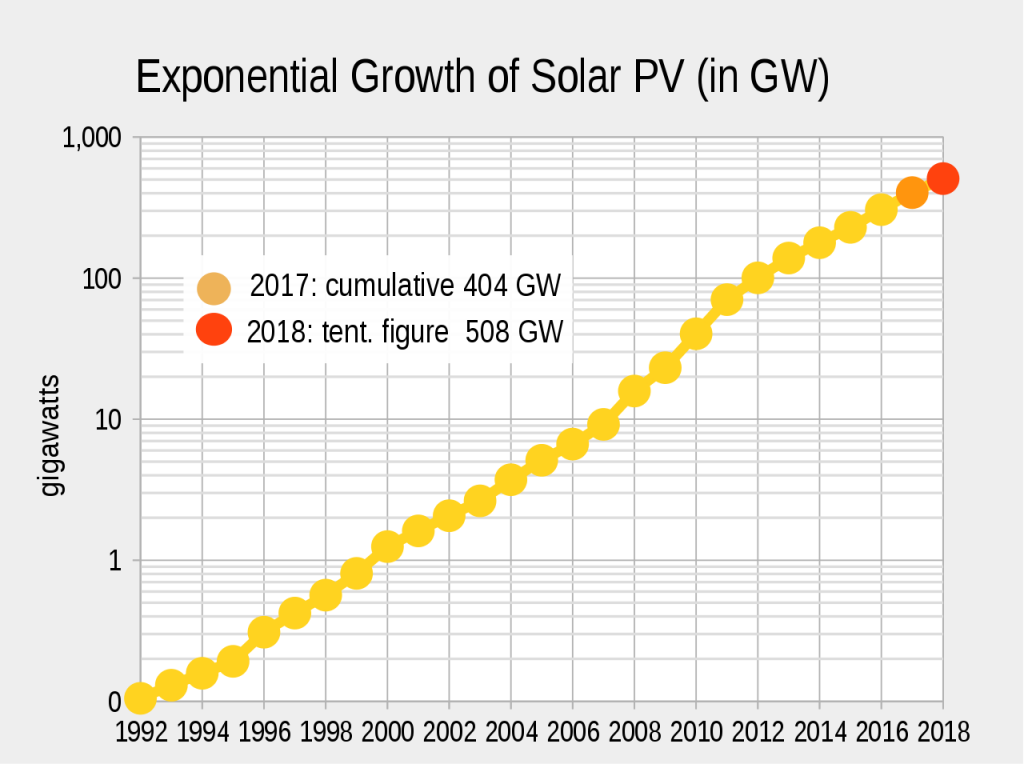
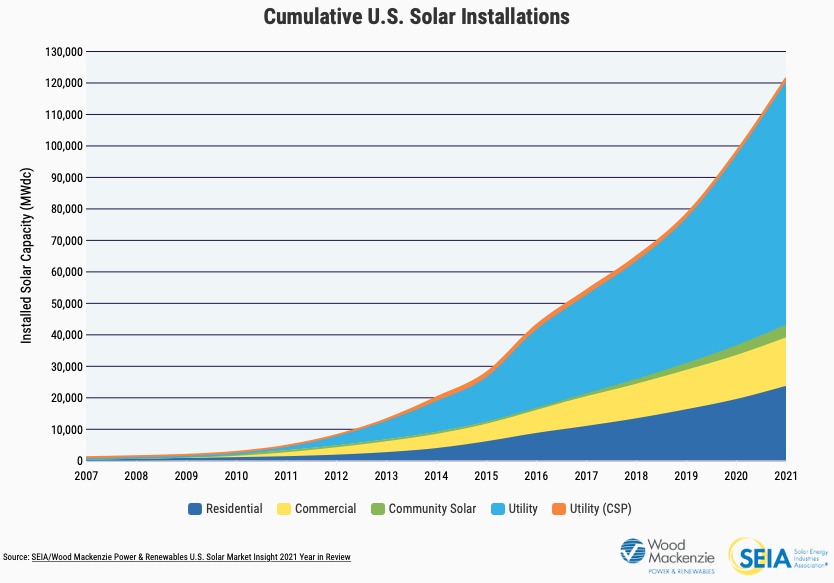
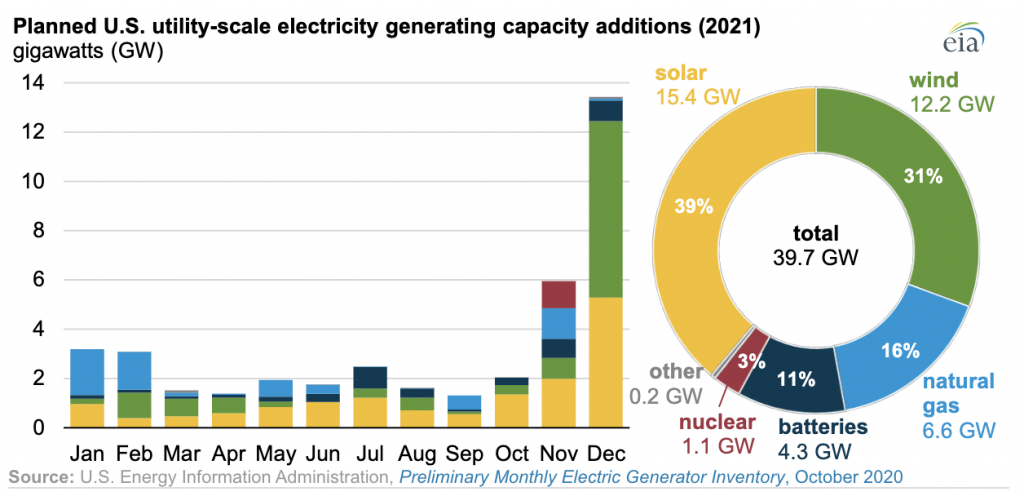
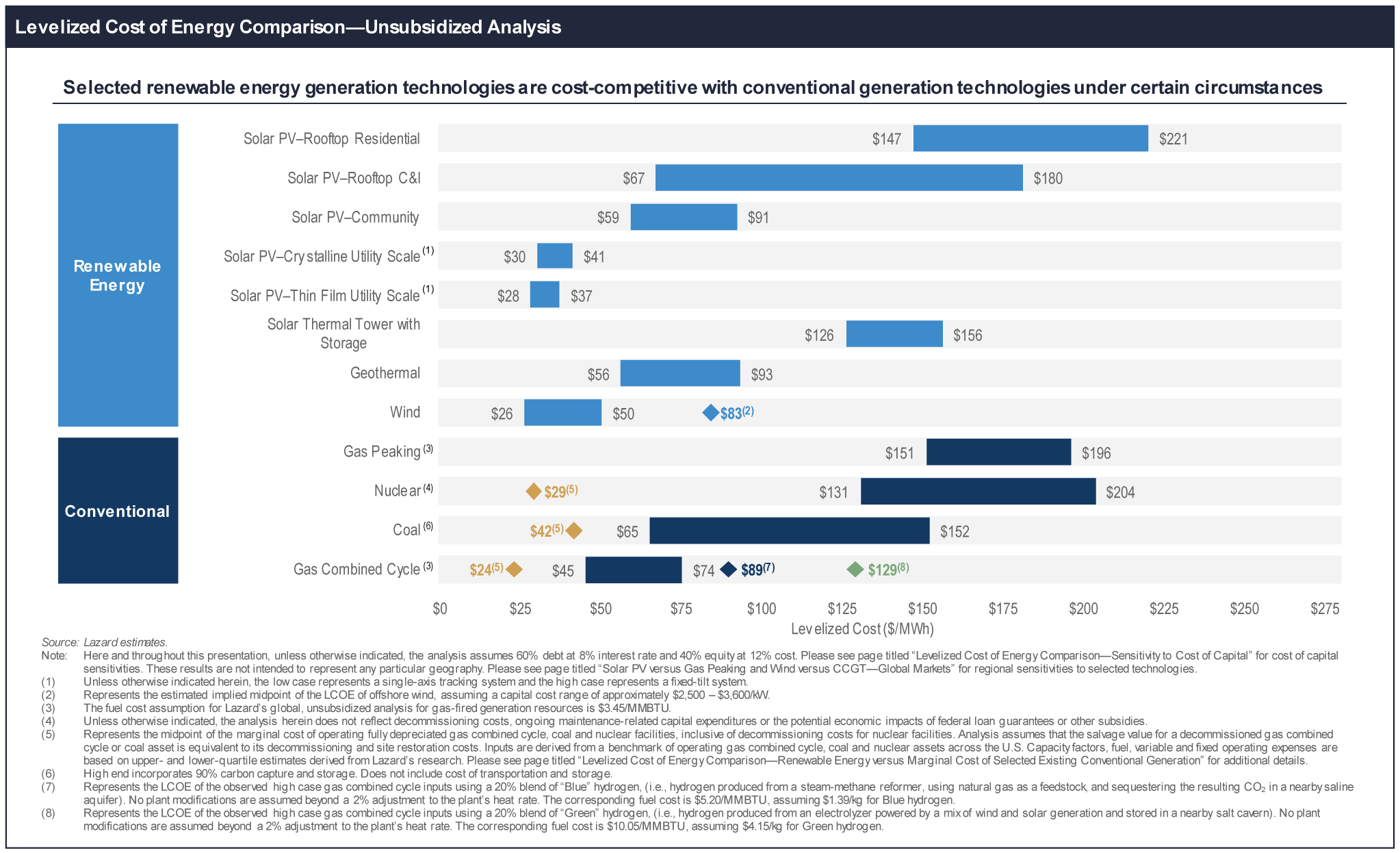
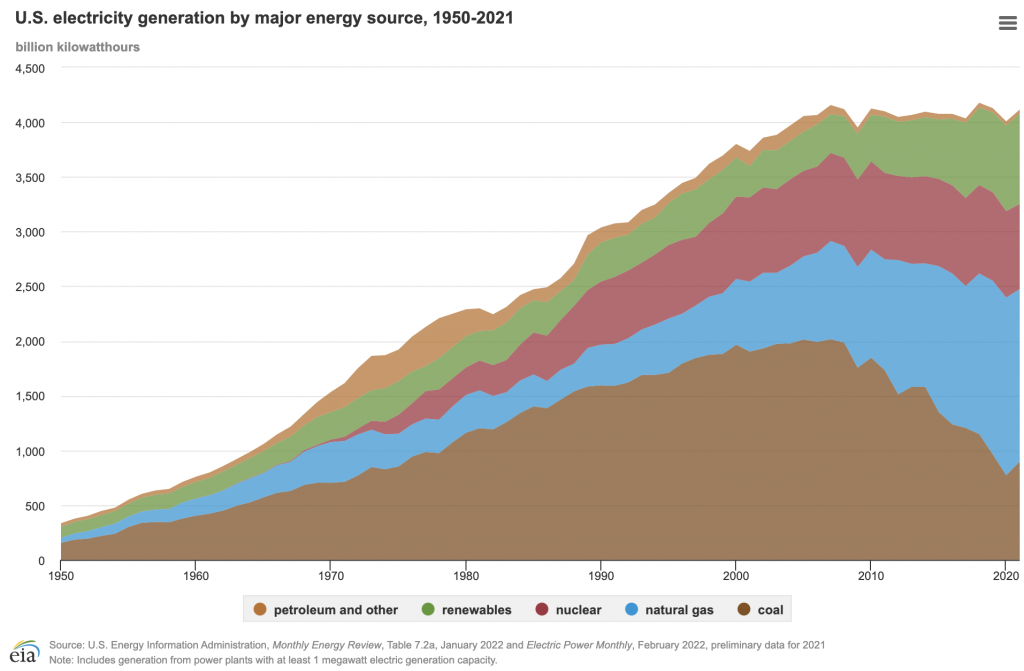
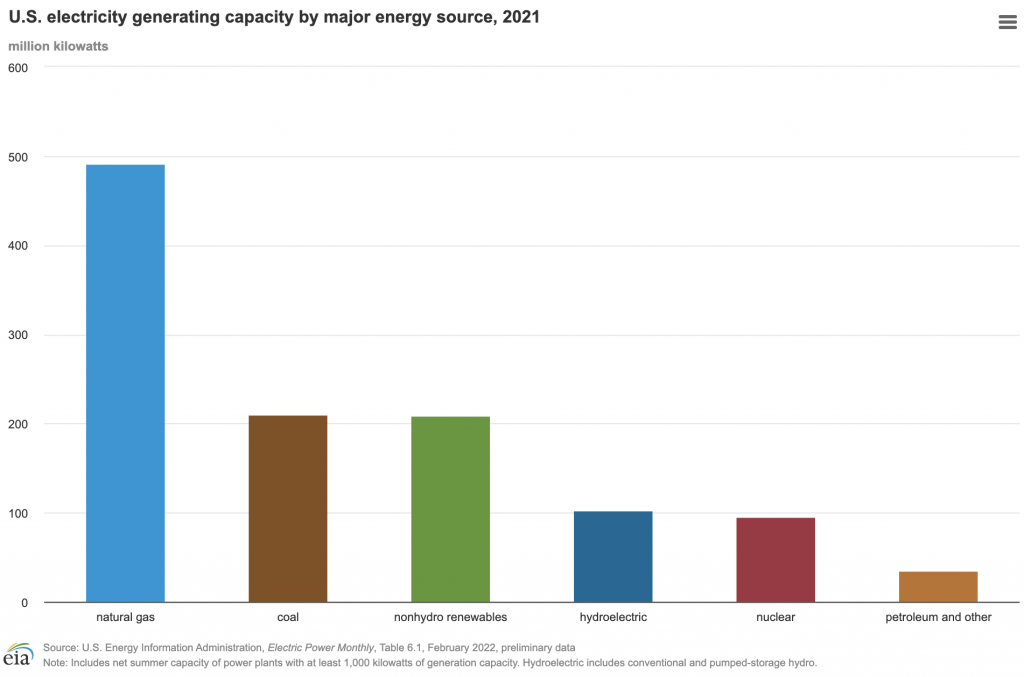
With all the above going for PV, it seems like solar power should be everywhere, but there are two items to consider.
1) There are so many existing fossil fuel power plants in the world, that even adding 190GW of world PV 2022 is just a bump. Making a real change will take many years of both growth in PV and in the decommissioning of older fossil fuel plants. This trend is continuing but is a transition. (LINK)
2) PV works only during daylight hours. As storage becomes bundled with PV, this limitation will be mitigated.
Video 10.10.1 – How Solar Energy Got so Cheap, and Why It’s Not Everywhere…Yet (7:53)
The video above makes the point that most “traditional plants suck at ramping up,”unable to go from zero to producing power in a short period of time. This is true with nuclear and coal. Nuclear power in the US most often operates at a constant output, rarely changing its output by much except when refueling. A coal plant may take from 3 hours to 2 days to ramp up. Neither nuclear or coal pair well with solar, because of this delay. But natural gas plants do. A gas peaking plant – intended to operate only during times of peak demand, usually in the afternoon and evening when solar contributions to the grid drop off and before people go to bed and require less electricity – does pair well with solar, and such plants can be operational in a few minutes. The West Phoenix gas plant can ramp up in under 3 minutes; it is essentially a jet engine attached to a turbine and generator. LINK
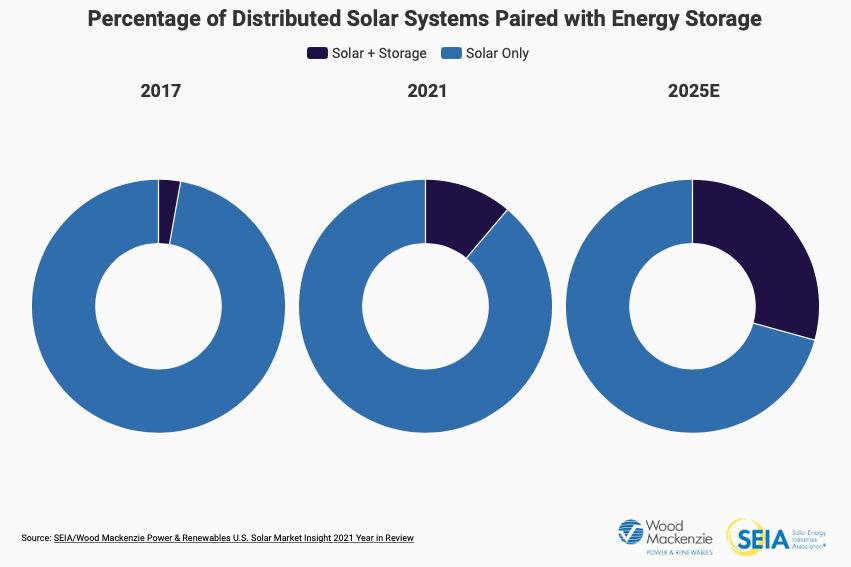
Video 10.10.2 – How Green Is Solar Energy Really? (9:02)
Many of the same people who are concerned about potential waste from PV are fine with mining coal, removing mountaintops, fracking, coal ash dumps, emissions from coal, oil and natural gas, and the carbon dioxide emitted from all fossil fuels.
Advantages of PV + Storage
1. At utility scale, PV is the least expensive form of electricity.
2. There is no fuel. It is renewable.
3. There are no emissions. This leads to lower hospitalizations and deaths and a cleaner environment.
4. It does not contribute to climate change.
5. Unlike large utility plants which are centralized, solar can be distributed, lessening the need for large transmission lines.
6. It is locally produced. More money stays local.
7. No large military is needed to protect our “national interests” that occur in other countries.
Disadvantages of PV + Storage
1. Solar is variable. The sun goes down. There are cloudy days. It is dispatchable only when coupled with storage.
2. PV can require large areas, though the area affected may not be more than the land affected by coal mining and ash waste pits. Also, rooftops can be used, reducing the need for cooling the structure underneath.


